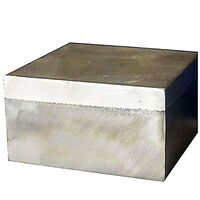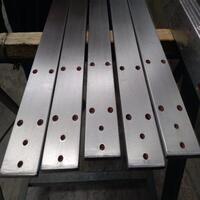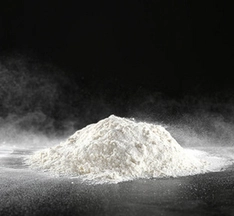1. Introduction
Just 24 hours ago, the architectural world buzzed with news of a new mixed-use development in Copenhagen featuring a fully titanium-clad atrium—a bold move that underscores how metal clad systems are pushing the boundaries of design and resilience. As cities demand sustainable, low-maintenance, and visually striking exteriors, niche applications of metal clad materials are taking center stage.

From corten steel siding that weathers gracefully to aluminum clad pipe insulation in cryogenic plants, ‘metal clad’ is far more than a roofing trend. In this article, we’ll explore how specialized metal clad types are solving real-world engineering and aesthetic challenges across advanced fields.
2. What Does Metal Clad Mean?
At its core, the metal clad meaning refers to a composite material where a base metal is bonded—mechanically or metallurgically—with a layer of a different, often more corrosion-resistant or decorative metal. This process, known as cladding, enhances performance without sacrificing cost-efficiency.
Clad metals like aluminum clad stainless steel or stainless clad aluminum merge the strength of steel with the lightness or corrosion resistance of aluminum. Similarly, copper-nickel clad or titanium clad plates offer extreme durability in marine or chemical environments. Understanding clad metal meaning helps architects and engineers select the right metal clad type for high-stakes applications.
3. Metal Clad in High-Performance Architecture
Modern architecture increasingly relies on metal clad walls and facades that do more than just look good—they perform. Take the corten steel facade: prized for its rust-like appearance that stabilizes over time, it eliminates the need for painting and offers decades of service with zero maintenance. While corten siding cost can be higher upfront, lifecycle savings make it a smart investment for museums, universities, and urban installations.

Other standout examples include:
- Zinc clad dormers and zinc clad roofs that develop a soft patina, ideal for heritage-sensitive districts
- Vertical standing seam metal siding in colorbond standing seam or PAC Clad HWP finishes, offering clean lines and superior weather resistance
- Copper siding and zinc metal siding used in boutique retail and luxury residences for their evolving aesthetics
- Corrugated steel facade systems paired with metal weatherboard profiles for industrial-chic commercial spaces
These aren’t just stylistic choices—they’re engineered responses to climate, durability, and sustainability demands.
4. Industrial & Infrastructure Applications Beyond Aesthetics
Beyond buildings, metal clad technology shines in critical infrastructure. Aluminum clad pipe insulation, for instance, protects pipelines in LNG facilities by combining thermal efficiency with vapor barrier integrity. Similarly, metal clad electrical wire—often aluminum clad steel wire or CU clad wire—is used in harsh environments where fire resistance and mechanical protection are non-negotiable.

In power generation and chemical processing, clad metal plates like Inconel 625 weld overlay on carbon steel plate provide corrosion resistance at a fraction of solid alloy cost. Boiler plate steel with chrome carbide overlay handles abrasive slurries in mining, while electroless nickel or nickel sulfamate plating enhances wear resistance in aerospace components.
Even in everyday contexts, metal clad insulation wraps ducts in hospitals and data centers, ensuring thermal stability and fire safety. The versatility of metal clad building systems extends to sheds, warehouses, and modular units—steel clad buildings that go up fast and last decades.
5. Material Innovation: From PAC Clad to Aerospace Alloys
Brands like Steel Clad Inc. and PAC Clad are driving innovation with products like PAC Clad column covers, coping, and standing seam roofs tailored for coastal or high-wind zones. Their systems often use aluminum clad sheet or stainless steel metal plate engineered for thermal movement and salt resistance.
Meanwhile, in aerospace and defense, alloy clad materials such as 2024-T3 clad aluminum or 7075-T6 clad offer strength-to-weight ratios unattainable with monolithic metals. Titanium alloy plate and Inconel 718 plate are used in jet engines, where clad layers protect against oxidation at extreme temperatures.
Even metal nameplates in industrial settings now use brass plates for engraving or stainless steel 316 sheet for outdoor readability—proving that clad isn’t just for large surfaces but precision components too.
6. Conclusion
Metal clad is no longer just about corrugated metal siding or basic roofing. From corten steel plate installations in urban plazas to aluminum clad stainless steel in biotech labs, clad metals are enabling smarter, longer-lasting, and more expressive designs. Whether you’re specifying a zinc facade for a boutique hotel or selecting clad wire for a data center, understanding the full spectrum of metal clad meaning and applications ensures you harness its full potential.
Our Website founded on October 17, 2012, is a high-tech enterprise committed to the research and development, production, processing, sales and technical services of ceramic relative materials such as Explore. Our products includes but not limited to Boron Carbide Ceramic Products, Boron Nitride Ceramic Products, Silicon Carbide Ceramic Products, Silicon Nitride Ceramic Products, Zirconium Dioxide Ceramic Products, etc. If you are interested, please feel free to contact us.
